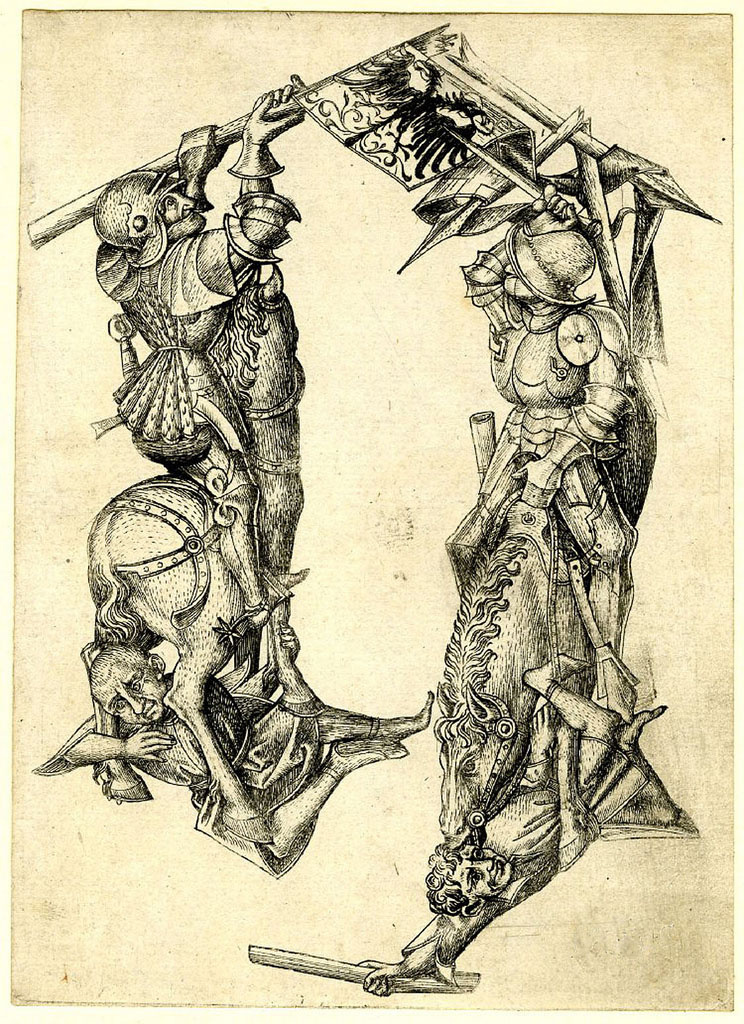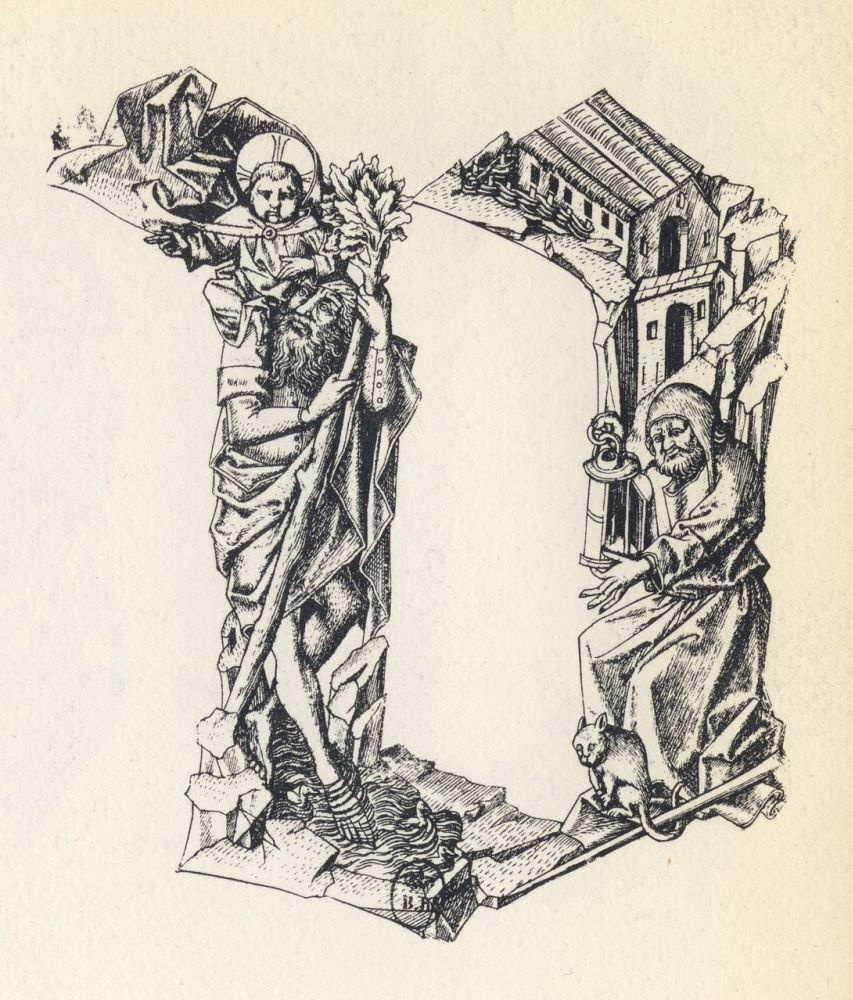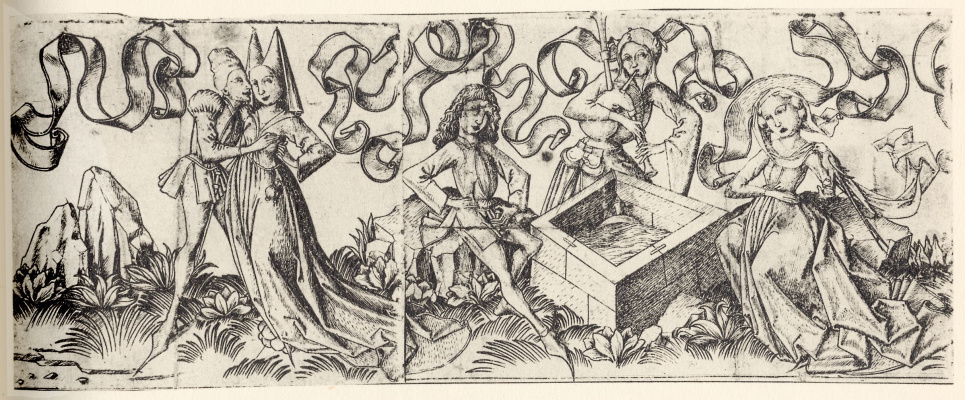


© Staatliche Graphische Sammlung München

More than 300 copper plate engravings by Master E.S. survive and 200 more could be reconstructed based on copies of prints. The stylistics of his artworks is grounded on the Late Gothic traditions. The art experts mention the influence of Konrad Witz, an artist, and sculptors Nikolaus Gerhaert and Master of the Karlsruhe Passion on the German engraver’s artworks.
At the same time the whimsical and ingenious compositions with a lot of figures by Master E.S. powerfully boosted sculpture art on both sides of the Alps. The artist introduced his peculiar features in the copper plate engraving technique. With his unique parallel hatches Master E.S. modeled shadows and rhythm of movement and managed to create a special velvet effect in his prints.
Master E. S. The Letter d, 1466, copper plate engraving
The anonymous artist mockingly presented monks and nuns in their hypocritical mendaciousness. Ottoman Turks armed to the teeth represent the sinister allure. Peasants and members of the lower classes were depicted like "wild men" living by instincts and fighting each other. Master E.S. also printed fools, popular medieval images, warning of the dangers of bodily lusts.




© Staatliche Graphische Sammlung München

of the German printmaker was unique for his time.
Master also addressed to religious themes in his oeuvre including scenes out of the Books of the Old and the New Covenant, the Passion of Christ, life of the Holy Virgin and Christ’s disciples as well as legends about saints.
At the same time the German artist depicted the everyday life in his prints and engravings; numerous paper prints with courtly scenes of erotic nature survived. The artist often hinted at carnal delights so unveiled for his contemporaries.
Master E. S. The Holy Virgin of the Rosary Standing on Crescent Moon, second half of the XV century, engraving

Master E. S. The Queen of Hearts. The Playing Card, engraving, second half of XV century
















